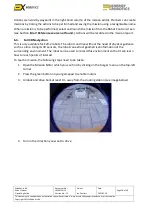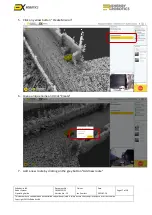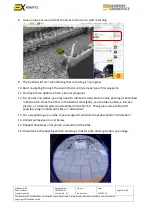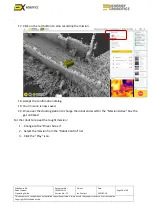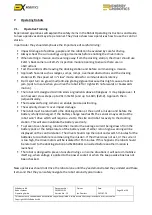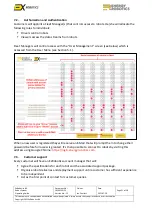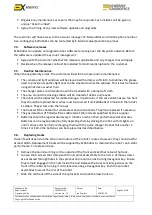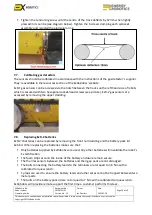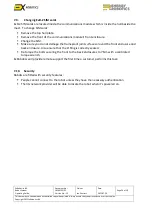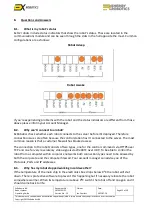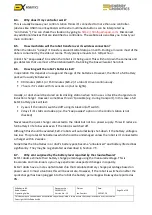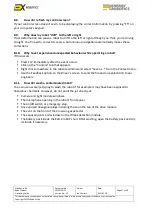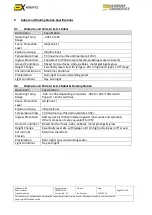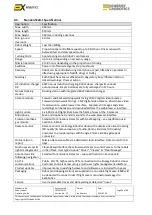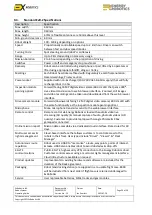
ExRobotics B.V.
Robot System
Operating Guide
Document No.:
20190122IP1
Version No.: 12
Owner:
Ian Peerless
Date:
2021-07-20
Page 20 of 30
This document is considered an uncontrolled copy when printed. Always ensure that you print and use a current version.
Copyright 2021 ExRobotics B.V.
7.
Operating Robots
7.1.
Operative Training
Experienced operatives will explain the safety items in the Robot Operating Instructions and Guide
to new operatives and key site personnel. They’ll also show new operatives how to use the control
station.
In particular they should emphasise the importance of careful driving:
▪
Impact damage to facilities, people and the robot can be avoided by careful driving.
▪
Always check the surroundings using all cameras before enabling the drive motors.
▪
When starting a mission and reversing away from the docking station, the driver should use
ExR-
1’s back camera or ExR
-
2’s inspection module panning to ensure there are no
obstructions.
▪
Test the controls after leaving the docking station and before commencing a mission.
▪
Approach hazards such as ledges, sumps, ramps, overhead obstructions and the docking
station with the speed set in
“slow”
mode. Allow for communications latency.
▪
Don’t
spot turn on grass/mud/anti-slip gratings/gravel because this might cause a track to
jam. (spot turns are when you drive the robot left or right with no forwards or backwards
motion).
▪
The robot isn’t designed to climb stairs or gradients above 30 degrees. It may topple over.
It
can however cross steps up to 20cm (ExR-1) and up to 10cm (ExR-2). Approach them
perpendicularly.
▪
The downward facing camera can enable precise positioning.
▪
The warranty does
n’
t cover impact damage.
▪
The robot must be returned to the docking station at the end of a mission and before the
battery is fully discharged. If the battery charge reaches 0% the sensors may work but the
robot w
on’t
drive which will require a visit to the site and robot recovery to the docking
station. This will also invalidate the battery warranty.
▪
To prevent over-heating, robots either monitor the average current being drawn from the
battery pack or the temperature of the battery pack. If either is too high a warning will be
displayed on the control station. The driver should stop the robot and wait 15 minutes for the
batteries to cool before recommencing the mission. If the driver does not act, or the current
is too high, the drive motors will be isolated for 15 minutes. If this happens the robot should
be returned to the docking station and ExRobotics consulted before another mission is
launched.
▪
The robot is designed to prevent unsafe driving so in some situations it will auto-immobilise
itself e.g. when voltage is applied to the power socket or when the keep awake box has not
been checked.
New operatives should not drive the robot alone until they’ve demonstrated they understand these
items and that they can safely navigate the robot around typical routes.











